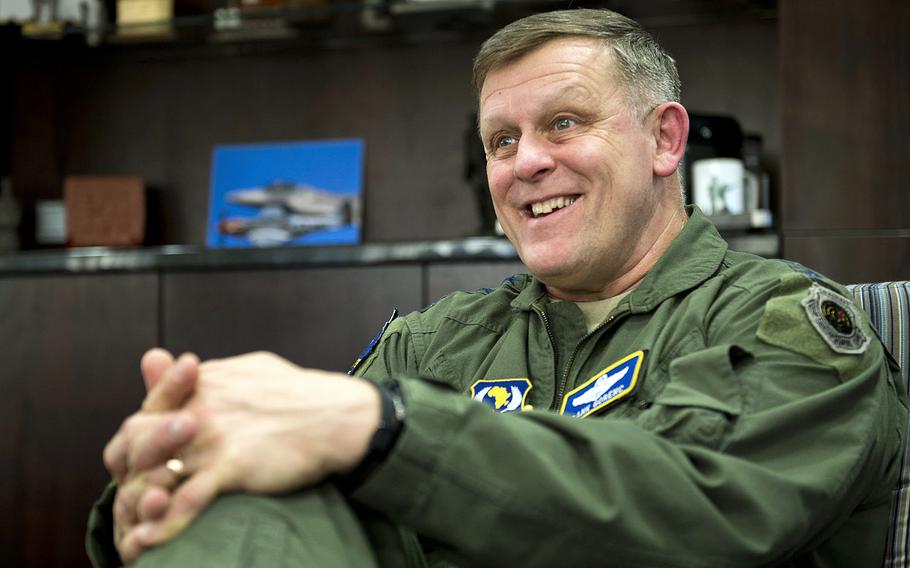
Gen. Frank Gorenc, commander of U.S. Air Forces in Europe-Air Forces Africa, answers questions Dec. 9, 2015, at Ramstein Air Base, Germany. On Tuesday, April 5, 2015, he said the Air Force will look to build up airfields in eastern Europe with the influx of money the service hopes to receive next year for its European mission. (Michael B. Keller/Stars and Stripes)
KAISERSLAUTERN, Germany — The Air Force will seek to build up airfields in eastern Europe with the additional funds the service hopes to receive next year for its European mission, the commander of U.S. Air Forces in Europe said.
Gen. Frank Gorenc said Tuesday that the increase in European Reassurance Initiative funds would allow his command to improve its presence and facilities on NATO’s eastern flank and to deter Russia, while also allowing for continuous training and more bilateral and multilateral exercises, according to an Air Force statement.
The news release included some of the comments Gorenc shared with defense reporters at a Pentagon breakfast in Washington.
“We already had a pretty robust training regime in Europe with our partners and allies, but this will allow us to do another aspect that I am keen on, and that is continuing to develop the airfields, particularly (in) the Baltic (states), Poland, Romania and Bulgaria,” Gorenc said. “This will allow for an easier place to go, to accomplish high-volume, high-velocity operations.”
The Pentagon’s fiscal 2017 budget request for ERI is $3.4 billion, an increase from $789 million this year. Military officials have said that Russia’s interference in Ukraine was driving the request for more funding.
Suitable airfields in eastern Europe would need infrastructure, such as weapons storage, fueling capabilities and maintenance facilities, Gorenc said. “It needs to be an environment that can generate sorties and combat power from the air as part of the joint campaign.” .
Gorenc said NATO was also looking at upgrading its air patrols over the Baltic states into a wider air-defense mission that would integrate aircraft, surface-to-air systems and air-space-control measures.
“The air defense journey is important because it gets us in the mind-set to be able to quickly transition to a more robust defense of the air in case it is necessary,” said Gorenc, who also heads the NATO Allied Air Command.
In 2015, NATO expanded the air-policing mission after a steady increase in Russian military air activity. There are currently eight NATO aircraft performing the mission, according to the Air Force.